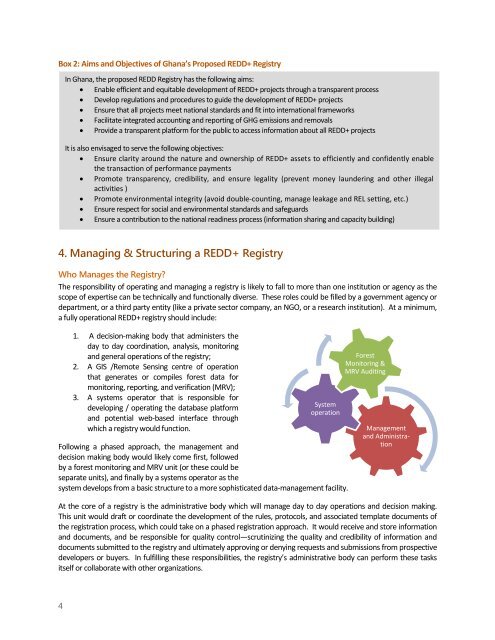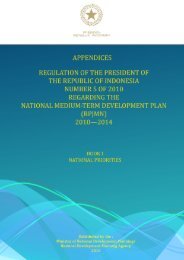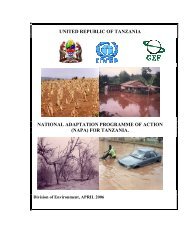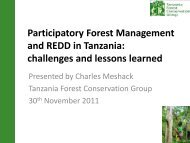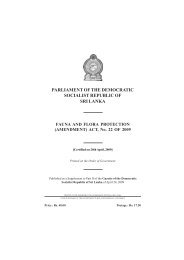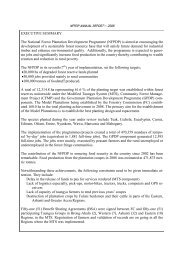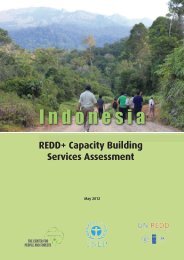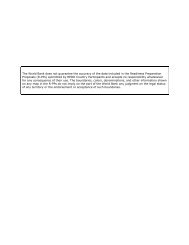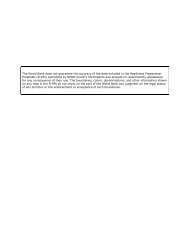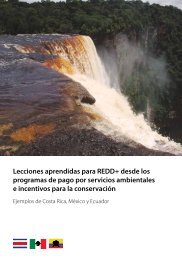PDF - The REDD Desk
PDF - The REDD Desk
PDF - The REDD Desk
Create successful ePaper yourself
Turn your PDF publications into a flip-book with our unique Google optimized e-Paper software.
Box 2: Aims and Objectives of Ghana’s Proposed <strong>REDD</strong>+ Registry<br />
In Ghana, the proposed <strong>REDD</strong> Registry has the following aims:<br />
Enable efficient and equitable development of <strong>REDD</strong>+ projects through a transparent process<br />
Develop regulations and procedures to guide the development of <strong>REDD</strong>+ projects<br />
Ensure that all projects meet national standards and fit into international frameworks<br />
Facilitate integrated accounting and reporting of GHG emissions and removals<br />
Provide a transparent platform for the public to access information about all <strong>REDD</strong>+ projects<br />
It is also envisaged to serve the following objectives:<br />
Ensure clarity around the nature and ownership of <strong>REDD</strong>+ assets to efficiently and confidently enable<br />
the transaction of performance payments<br />
Promote transparency, credibility, and ensure legality (prevent money laundering and other illegal<br />
activities )<br />
Promote environmental integrity (avoid double-counting, manage leakage and REL setting, etc.)<br />
Ensure respect for social and environmental standards and safeguards<br />
Ensure a contribution to the national readiness process (information sharing and capacity building)<br />
4. Managing & Structuring a <strong>REDD</strong>+ Registry<br />
Who Manages the Registry<br />
<strong>The</strong> responsibility of operating and managing a registry is likely to fall to more than one institution or agency as the<br />
scope of expertise can be technically and functionally diverse. <strong>The</strong>se roles could be filled by a government agency or<br />
department, or a third party entity (like a private sector company, an NGO, or a research institution). At a minimum,<br />
a fully operational <strong>REDD</strong>+ registry should include:<br />
1. A decision-making body that administers the<br />
day to day coordination, analysis, monitoring<br />
and general operations of the registry;<br />
2. A GIS /Remote Sensing centre of operation<br />
that generates or compiles forest data for<br />
monitoring, reporting, and verification (MRV);<br />
3. A systems operator that is responsible for<br />
developing / operating the database platform<br />
and potential web-based interface through<br />
which a registry would function.<br />
System<br />
operation<br />
Following a phased approach, the management and<br />
decision making body would likely come first, followed<br />
by a forest monitoring and MRV unit (or these could be<br />
separate units), and finally by a systems operator as the<br />
system develops from a basic structure to a more sophisticated data-management facility.<br />
Forest<br />
Monitoring &<br />
MRV Auditing<br />
Management<br />
and Administration<br />
At the core of a registry is the administrative body which will manage day to day operations and decision making.<br />
This unit would draft or coordinate the development of the rules, protocols, and associated template documents of<br />
the registration process, which could take on a phased registration approach. It would receive and store information<br />
and documents, and be responsible for quality control—scrutinizing the quality and credibility of information and<br />
documents submitted to the registry and ultimately approving or denying requests and submissions from prospective<br />
developers or buyers. In fulfilling these responsibilities, the registry’s administrative body can perform these tasks<br />
itself or collaborate with other organizations.<br />
4


